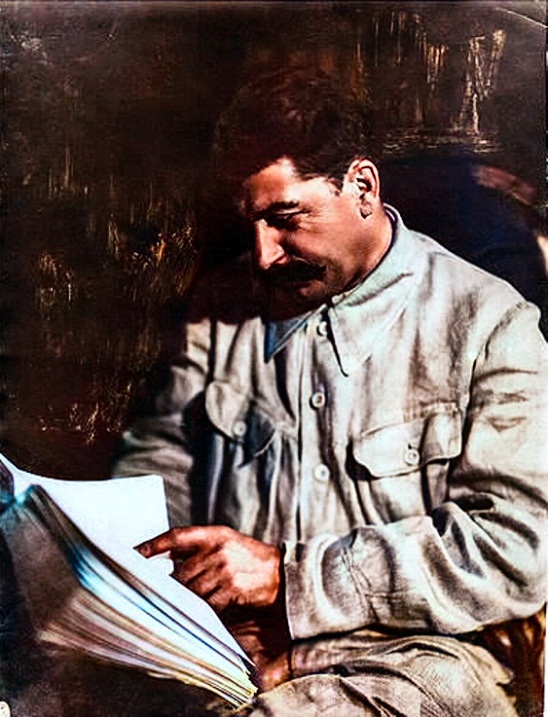Image is of one of the six salvos of the Oreshnik missile striking Ukraine.
The Oreshnik is an intermediate-range ballistic missile that appears to split into six groups of six submunitions as it strikes its target, giving it the appearance of a hazel flower. It can travel at ten times the speed of sound, and cannot be intercepted by any known Western air defense system, and thus Russia can strike and conventionally destroy any target anywhere in Europe within 20 minutes. Two weeks ago, Russia used the Oreshnik to strike the Yuzhmash factory in Ukraine, particularly its underground facilities, in which ballistic missiles are produced.
Despite the destruction caused by the missile, and its demonstration of Russian missile supremacy over the imperial core, various warmongering Western countries have advocated for further reprisals against Russia, with Ukraine authorized by the US to continue strikes. Additionally, the recent upsurge of the fighting in Syria is no doubt connected to trying to stretch Russia thin, as well as attempting to isolate Hezbollah and Palestine from Iran; how successful this will have ended up being will depend on the outcome of the Russia and Syrian counteroffensive. Looking at recent military history, it will take many months for the Russians and Syrians to retake a city that was lost in about 48 hours.
Even in the worst case scenario for Hezbollah, it’s notable that Ansarallah has had major success despite being physically cut off from the rest of the Resistance and under a blockade, and it has defeated the US Navy in its attempts to open up the strait. Israel has confirmed now that their army cannot even make significant territorial gains versus a post-Nasrallah, post-pager terrorist attack Hezbollah holding back its missile strike capabilities. In 2006, it also could not defeat a much less well-armed Hezbollah and was forced to retreat from Lebanon.
Please check out the HexAtlas!
The bulletins site is here!
The RSS feed is here.
Last week’s thread is here.
Israel-Palestine Conflict
Sources on the fighting in Palestine against Israel. In general, CW for footage of battles, explosions, dead people, and so on:
UNRWA reports on Israel’s destruction and siege of Gaza and the West Bank.
English-language Palestinian Marxist-Leninist twitter account. Alt here.
English-language twitter account that collates news.
Arab-language twitter account with videos and images of fighting.
English-language (with some Arab retweets) Twitter account based in Lebanon. - Telegram is @IbnRiad.
English-language Palestinian Twitter account which reports on news from the Resistance Axis. - Telegram is @EyesOnSouth.
English-language Twitter account in the same group as the previous two. - Telegram here.
English-language PalestineResist telegram channel.
More telegram channels here for those interested.
Russia-Ukraine Conflict
Examples of Ukrainian Nazis and fascists
Examples of racism/euro-centrism during the Russia-Ukraine conflict
Sources:
Defense Politics Asia’s youtube channel and their map. Their youtube channel has substantially diminished in quality but the map is still useful.
Moon of Alabama, which tends to have interesting analysis. Avoid the comment section.
Understanding War and the Saker: reactionary sources that have occasional insights on the war.
Alexander Mercouris, who does daily videos on the conflict. While he is a reactionary and surrounds himself with likeminded people, his daily update videos are relatively brainworm-free and good if you don’t want to follow Russian telegram channels to get news. He also co-hosts The Duran, which is more explicitly conservative, racist, sexist, transphobic, anti-communist, etc when guests are invited on, but is just about tolerable when it’s just the two of them if you want a little more analysis.
Simplicius, who publishes on Substack. Like others, his political analysis should be soundly ignored, but his knowledge of weaponry and military strategy is generally quite good.
On the ground: Patrick Lancaster, an independent and very good journalist reporting in the warzone on the separatists’ side.
Unedited videos of Russian/Ukrainian press conferences and speeches.
Pro-Russian Telegram Channels:
Again, CW for anti-LGBT and racist, sexist, etc speech, as well as combat footage.
https://t.me/aleksandr_skif ~ DPR’s former Defense Minister and Colonel in the DPR’s forces. Russian language.
https://t.me/Slavyangrad ~ A few different pro-Russian people gather frequent content for this channel (~100 posts per day), some socialist, but all socially reactionary. If you can only tolerate using one Russian telegram channel, I would recommend this one.
https://t.me/s/levigodman ~ Does daily update posts.
https://t.me/patricklancasternewstoday ~ Patrick Lancaster’s telegram channel.
https://t.me/gonzowarr ~ A big Russian commentator.
https://t.me/rybar ~ One of, if not the, biggest Russian telegram channels focussing on the war out there. Actually quite balanced, maybe even pessimistic about Russia. Produces interesting and useful maps.
https://t.me/epoddubny ~ Russian language.
https://t.me/boris_rozhin ~ Russian language.
https://t.me/mod_russia_en ~ Russian Ministry of Defense. Does daily, if rather bland updates on the number of Ukrainians killed, etc. The figures appear to be approximately accurate; if you want, reduce all numbers by 25% as a ‘propaganda tax’, if you don’t believe them. Does not cover everything, for obvious reasons, and virtually never details Russian losses.
https://t.me/UkraineHumanRightsAbuses ~ Pro-Russian, documents abuses that Ukraine commits.
Pro-Ukraine Telegram Channels:
Almost every Western media outlet.
https://discord.gg/projectowl ~ Pro-Ukrainian OSINT Discord.
https://t.me/ice_inii ~ Alleged Ukrainian account with a rather cynical take on the entire thing.


On the one hand I’m afraid for the future of Brazilian industry with this deal in place. Since the 90s the Brazilian State has dismantled most industrial policy outside of Embraer and the Agribusiness sector. Cheap credit for industrial development is just not a priority. On the other, with Chinese investments like the huge BYD factory in Bahia I wonder if we can become Europe’s Mexico. It’s not like the Chinese are making these moves with hopes that Mercosur and the rest of South America can consume 300k EVs a year.
It’s like with how Mexico initially deindustrialized hard under NAFTA, but nowadays exports 400 billion dollars a year to the US. Most of which is industrialized goods. If Brazil can become that except for Europe it would actually be a win.
Lathe: Macron picks a new prime minister who will be there just to force this through like the last one forced through the last major law. Rinse and repeat for every market liberalization until Le Pen wins and the election is dissolved Romania style. 3rd French Empire time.
Brazilian economy will now take a nose dive with this agreement. This will force people to the left faster. (irony on this last sentence)
Yeah its a awful idea, since the EU will use it to basically destroy both South American industries but will in turn be more food dependent.